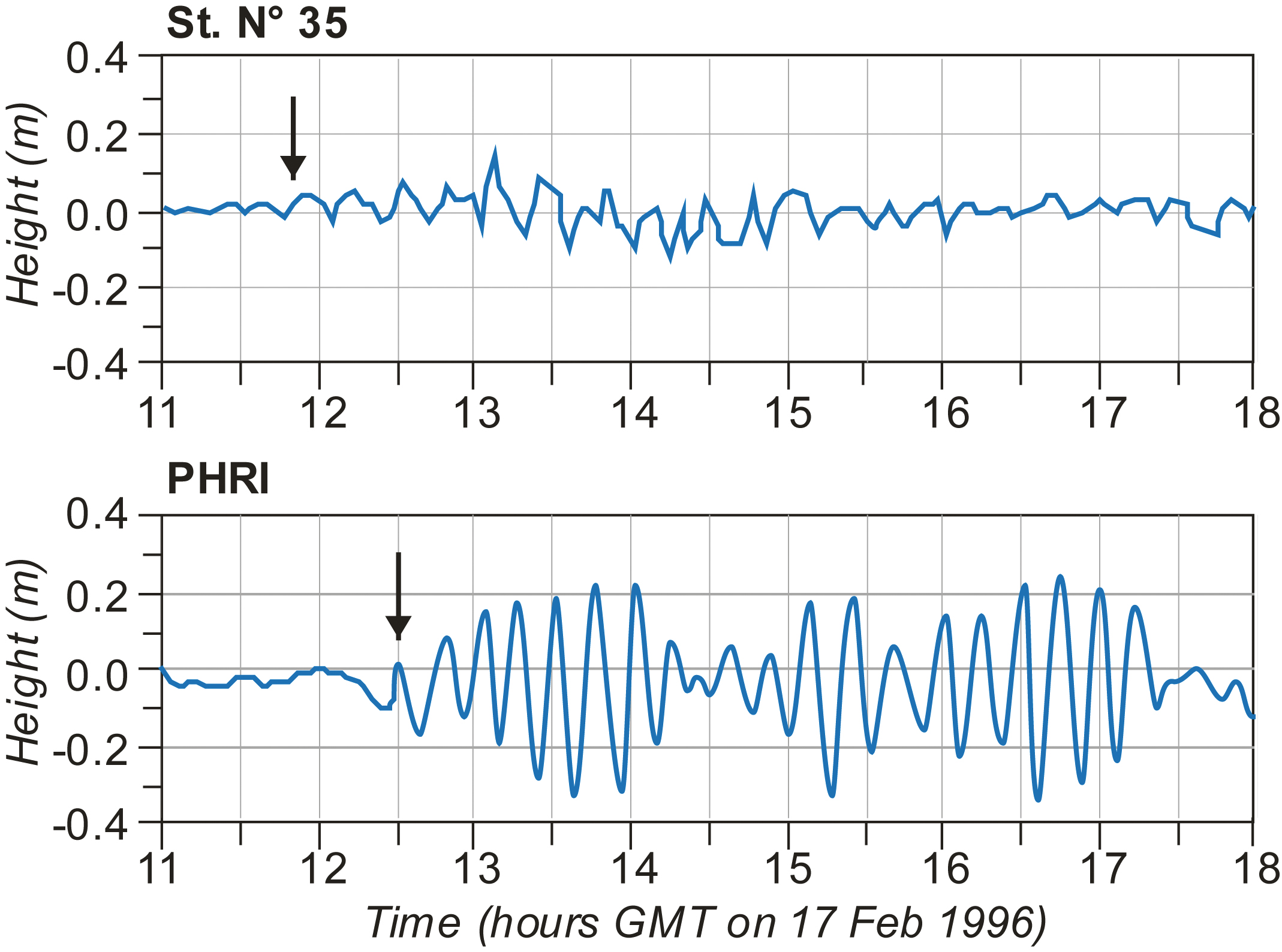Special | A | B | C | D | E | F | G | H | I | J | K | L | M | N | O | P | Q | R | S | T | U | V | W | X | Y | Z | ALL
M |
|---|
MagnitudeA number assigned to the properties of an event such that the event can be compared with other events of the same class. | |
MaremotoSpanish term for tsunami.
Damage caused by the 22 May 1960 Chilean tsunami. Photo courtesy of Ilustre Municipalidad de Maullin, USGS Circular 1187. | |
MareographA recording sea level gauge. Also known as a marigraph, tide gauge or sea level station. | |
Mean heightAverage height of a tsunami measured from the trough to the crest after removing the tidal variation. | |
Mean sea levelThe arithmetic mean of hourly heights of tide height on the open coast, or in adjacent waters which have free access to the sea, observed over some specified time period; often used as a datum for geodetic surveys. In the United States, mean sea level is defined as the average height of the surface of the sea for all stages of the tide over a 19-year period. | |
Meteorological tsunami (meteotsunami)Tsunami-like phenomena generated by meteorological or atmospheric disturbances. These waves can be produced by atmospheric gravity waves, pressure jumps, frontal passages, squalls, gales, typhoons, hurricanes and other atmospheric sources. Meteotsunamis have the same temporal and spatial scales as tsunami waves and can similarly devastate coastal areas, especially in bays and inlets with strong amplification and well-defined resonant properties (e.g. Ciutadella Inlet, Baleric Islands; Nagasaki Bay, Japan; Longkou Harbour, China; Vela Luka, Stari Grad and Mali Ston Bays, Croatia). Sometimes referred to as rissaga. | |
MicrotsunamiA tsunami of such small amplitude that it must be observed instrumentally and is not easily detected visually. | |
Modified Sieberg sea-wave intensity scale1. Very light. Wave so weak as to be perceptible only on tide-gauge records. 2. Light. Wave noticed by those living along the shore and familiar with the sea. On very flat shores generally noticed. 3. Rather strong. Generally noticed. Flooding of gently sloping coasts. Light sailing vessels or small boats carried away on shore. Slight damage to light structures situated near the coast. In estuaries reversal of the river flow some distance upstream. 4. Strong. Flooding of the shore to some depth. Light scouring on man-made ground. Embankments and dikes damaged. Light structures near the coasts damaged. Solid structures on the coast injured. Big sailing vessels and small ships carried inland or out to sea. Coasts littered with floating debris. 5. Very strong. General flooding of the shore to some depth. Breakwater walls and solid structures near the sea damaged. Light structures destroyed. Severe scouring of cultivated land and littering of the coast with floating items and sea animals. With the exception of big ships, all other type of vessels carried inland or out to sea. Big bores in estuary rivers. Harbour works damaged. People drowned. Wave accompanied by strong roar. 6. Disastrous. Partial or complete destruction of manmade structures for some distance from the shore. Flooding of coasts to great depths. Big ships severely damaged. Trees uprooted or broken. Many casualties. | |


